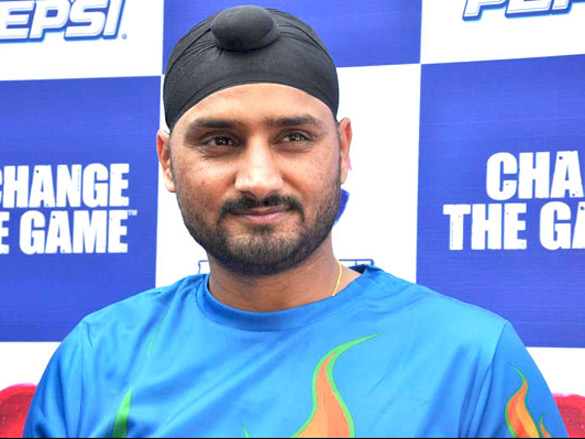
Good understanding and communication are key to working closely with NASA and JPL, helping them get to Mars.
TechRepublic’s Karen Roby spoke with Tom McCarthy, VP of business development with Motiv Space Systems, about his career in engineering and how things he has learned can help others in business. The following is an edited transcript of their conversation.
Karen Roby: By trade you’re an electrical engineer, Tom, and you’ve worked for many years in robotics and creating robots. And a lot of the work you’ve done has been in conjunction with NASA. Just take a minute before we even get into the meat of this, just give us a couple of highlights of your career, and again, your work with NASA.
SEE: Hiring Kit: Video Game Designer (TechRepublic Premium)
Tom McCarthy: When I started my career, I started at the Jet Propulsion Laboratory. And worked on developing computer systems and motion control systems that would control little tiny robots that would explore things like little rovers on an asteroid, or small rovers on Mars. Eventually those things took off into developments that would work for robotics for the larger rovers that you see today.
And then later in my career, worked with commercial companies that develop the robotic systems themselves with their partners, JPL and NASA, for all sorts of applications. So Mars, the moon, looking at other outer planet explorations and that kind of thing.
Karen Roby: One of the reasons we thought it would be interesting to talk to you today is just about how some of the experience you’ve had, and how that can help others in the private sector, with companies and working with their employees. And getting them to work together, which is something we’re all always looking to help each other work for common goals.
Some of the tips that I was hoping you could go over here with us, just things that you’ve learned from working with NASA and ways their engineering crews, how do they work together to achieve a greater goal?
Tom McCarthy: I think what’s really powerful about working with the likes of NASA or JPL or some of the other entities that work in that exploration space, is that there’s a wealth of talent, knowledge and capability there. And so being as part of a commercial company, the most important thing is that every place has its own strengths and their particular cultures that are important, depending on where their focus is. We do a lot of work with JPL and NASA Goddard and things like that.
For JPL, they’ve put a lot of energy into Mars applications. And so developing a sensitivity to those environments and what matters and what’s critical, to make sure that you provide a good solution and product that’s applicable to that environment is really important. And then developing good relationships with those people there so that there’s a good exchange of ideas. And then, ultimately, so that when they’re looking to try to do something new, something revolutionary, that there’s just a good basis, a good foundation of understanding and communication in order to execute those things.
SEE: The CIO’s guide to quantum computing (free PDF) (TechRepublic)
Karen Roby: So much of it, Tom, as we know, comes from the leadership and the tone that is set up from those who are at the top and managing others. What have you found in that realm?
Tom McCarthy: From the perspective I think of NASA, I think what I’ve seen, so just observing, is that risk is a big thing for them, making sure that they have a good managed path to risk. They want to be successful. And then from the outside, we want them to be successful, because that’s good business. So, being a part of something that is successful is good.
“The ability to evolve has been critical. To try to figure out what are the tools and the environment that makes the staff comfortable and allows you to stay in touch with them. To make sure that they do have what they need in order to execute their job, make certain work arrangements for them and to be flexible.”
Tom McCarthy, VP of business development with Motiv Space Systems
So again, promoting that exchange of ideas, being responsive, making sure that we follow through on certain commitments. And deliver on capability so that they feel comfortable that they can rely on that, and that drives their risk down. And that makes for a good partnership. And I think ultimately that flows to leadership on both sides. That’s when those are good exchanges and good working relationships. But that takes time. You have to build that, that doesn’t come overnight. It just comes from small steps of work and engagement and just follow-through.
Karen Roby: I think one of the things, Tom, with, we’ve had so much going on in our world of course. And just feelings of uncertainty and when’s this going to be back to normal and, oh my gosh, and things have been changing and people working from home, there’s just been a lot of changes and shifts here.
So when it comes to keeping employees involved and productive, sometimes that can be a real challenge. Really for me the perspective of what you’ve seen from NASA and teams working together and keeping people involved, and then from your own experience there as well.
SEE: NASA Spinoffs: Everyday items with space innovation origins (TechRepublic)
Tom McCarthy: I think we all learned in this year plus that has been a major challenge. And so the ability to evolve has been critical. To try to figure out what are the tools and the environment that makes the staff comfortable and allows you to stay in touch with them. To make sure that they do have what they need in order to execute their job, make certain work arrangements for them and to be flexible.
And then just to make sure that you’re listening too, to figure out what is working, what isn’t working. And I think, and we’ve seen a variety of approaches from our customers, other partners and so forth. And I think especially for the customers, where they’re big, maybe they have five to 10,000 people there. Well, those are big facilities. They’ve had to do a lot of remote activities. And so in some ways we’ve just had to be creative in trying to find ways to work with them, too. Whether it’s just, again, we’re remote, or if there are ways that we can provide actually something to them as a value. Because we’re able to have a controlled space because we’re smaller, and we have a little more direct management over certain spaces.
That can be an advantage and it can help them when we’re in challenging times. And so we’ve definitely been able to leverage those things so that we’re, again, we’re making sure that we have a good follow-through with them on some of these things to keep projects going. It’s been tough. I mean, everybody has challenges. The supply chains have been tough. Just the opportunity to meet isn’t there, so we do things remote. Some things work really well, some things are … they’re not as good, but you just try to refine and make the best of it. And I think so far, I think it’s worked out OK.
SEE: NASA: Landing on Mars, working from home. Perseverance all-around (TechRepublic)
Karen Roby: Excellent. And switching gears here before I let you go, Tom. Again, you’ve had a really interesting career and worked on, I’m sure, a lot of great projects. If you had to say, if you can say, what has been the most exciting project or just piece of work you’ve been involved in?
Tom McCarthy: Well, that’s a tough one. I’ll say this, the work that I’ve done has been a basis of constant learning all the way through my career. And the one thing I really like is actually in the role that I carry today, I have the opportunity to see a really broad spectrum of what different people are doing. It’s really easy when you work for a NASA center or JPL, you get focused on your particular project, and you forget that there’s this amazing industry around you because you’re hyper-focused and you have big responsibilities.
What’s nice is I get to pop my head out a little bit and meet with people all across the industry. They’re really doing some phenomenal things and really exciting technology development or new ideas for exploring different places. And I find that fascinating. So if it wasn’t for the work that I did before, I wouldn’t have been able to ultimately do that. And so for me, that’s what’s been the most rewarding. It’s just the ability to really appreciate across the industry what they’re doing.
24World Media does not take any responsibility of the information you see on this page. The content this page contains is from independent third-party content provider. If you have any concerns regarding the content, please free to write us here: contact@24worldmedia.com

3 Indian Players Whose Careers Were Ruined Because Of Chetan Sharma Selection Committee

Marnus Labuschagne Caught Off-Guard By ODI Captain Call After Steve Smith Snub

Everyone Is Looking Forward To It, The Standard Will Be Very High – Jacques Kallis On CSA’s SA20

Danushka Gunathilaka Granted Bail On Sexual Assault Charges

Ramiz Raja Sends Legal Notice To Kamran Akmal For Defamatory, False Claims Against The Board

Harbhajan Singh Reckons Mumbai Indians Should Release Kieron Pollard Ahead Of The IPL Auction 2023

Ian Bishop Praises Sam Curran For His Performances On Bouncy Australian Tracks

Why Choose A Career In Child Psychology?